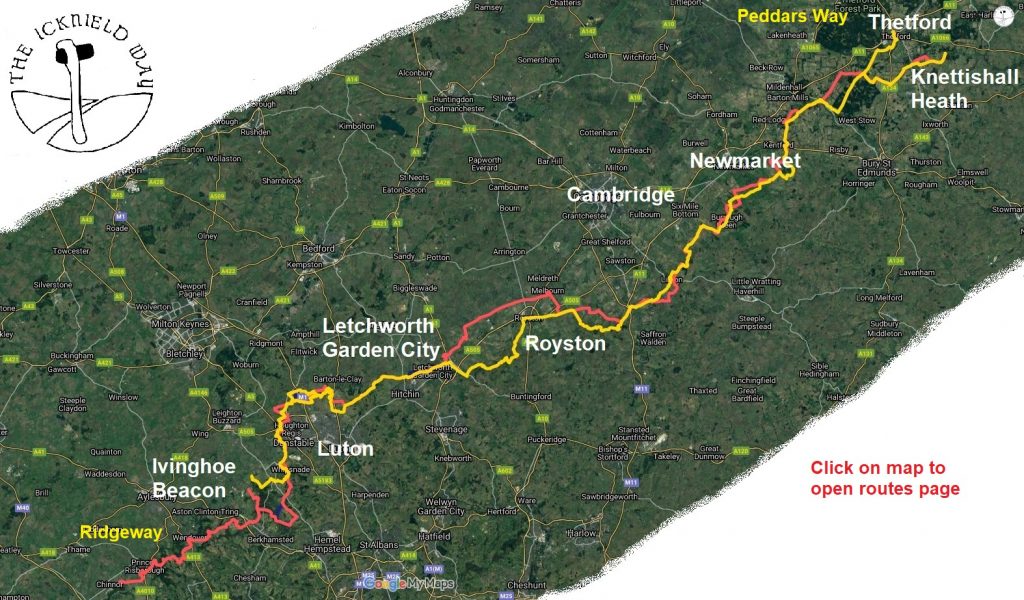
The Oldest Road in Britain
The Icknield Way is unique among long distance tracks because it can claim to be “the oldest road in Britain”. Extending from the Dorset coast to Norfolk, the ancient route of the Icknield Way consists of prehistoric pathways, old when the Romans came. Dotted with archaeological remains, it survives as splendid tracks and green lanes along the chalk “spine” of England.
The Icknield Way Path runs from the end of the Ridgeway National Trail at Ivinghoe Beacon, near Tring, to the start of the Peddar’s Way National Trail at Knettishall Heath, near Thetford, for 110 miles (177 km).
The Icknield Way Association looks after the interests of the route as a whole, monitoring any actions that may threaten its integrity and urging improvements to the route for walkers. There is a sister website for the multi-user riders route at the Icknield Way Trail
The route takes the walker over some delightful country, including the Chilterns and Breckland, often with striking panoramic views, through some charming villages, and along miles of beautiful green lanes. The Icknield Way Association has aimed to find the most pleasant route for walking, as close as possible to the general line of the ancient Icknield Way.
Since the first edition of the Icknield Way Path – A Walkers’ Guide was published in 1984, towns such as Luton and Hitchin have expanded their suburbs. Subsequent editions of the Guide have been based on experience gained over the years with substantial changes to the route near the start from Dunstable to Letchworth, to keep it generally in the open countryside.
The Association hopes that you will find much of interest and intrigue in this unexpectedly attractive lowland route along this part of the ‘Great Chalk Way’. Detailed route descriptions and clear maps are supplemented with notes on the geology, geomorphology, archaeology, flora and bird life, with backup information on public transport in the area.
Two alternative routes allow a visit to the interesting village of Toddington, and a final destination at Thetford.
